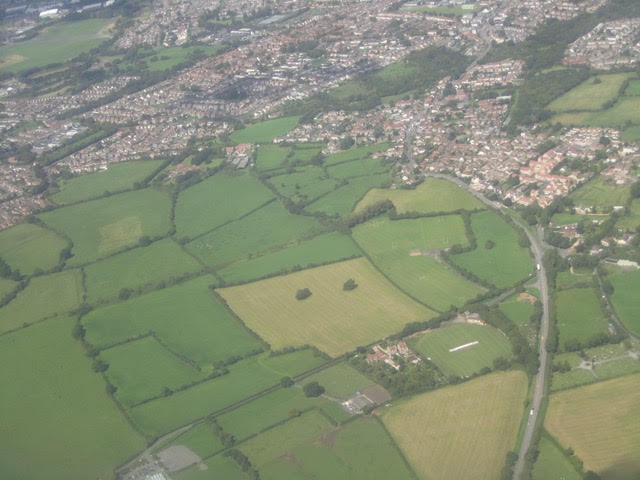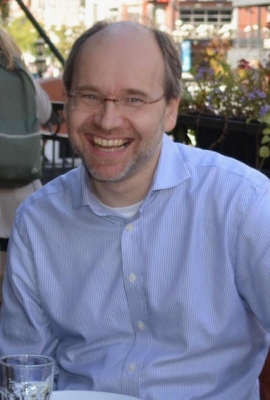The Landscape Ecology Lab is currently working on four major research projects (and a few smaller projects):
- Earth Observation in support of the City Biodiversity Index (EO4CBI) (brochure),
- Speak no evil, hear no evil? Uncertainty analysis and communication in Canadian environmental impact assessment practice and decision making (more information here and here),
- Monitoring the use and effectiveness of wildlife passages along HW 175 for small and medium-sized mammals (see News Bulletins below),
- Urban sprawl in Europe (more information here and here).
Here is an interview with Jochen Jaeger about research on urban sprawl done in his lab (in French).
Landscape Ecology Lab (LEL)


Jochen A. G. Jaeger, PhD Associate Professor and Graduate Program Director (MEnv Program), Geography, Planning and Environment
Dr. Jaeger received his PhD from the Department of Environmental Sciences at the ETH Zurich (Swiss Federal Institute of Technology) in 2000. He held a position at the Centre of Technology Assessment in Baden-Württemberg in Stuttgart, Germany, and lectured at the University of Stuttgart. In 2001, he went to Canada As a postdoctoral fellow with Dr. Lenore Fahrig in her Landscape Ecology Laboratory at Carleton University, Ottawa, funded by the German Academy of Natural Scientists Leopoldina. From 2003 to 2007 he was back in Zurich at the ETH as a research associate and was funded by the German Research Foundation DFG, the Swiss National Science Foundation SNF, the Swiss Federal Roads Authority, and the Swiss Federal Office for the Environment. His two last larger projects in Zurich were on the degree of landscape fragmentation and the degree of urban sprawl in Switzerland as indicators for the Swiss Monitoring System of Sustainable Development (MONET). He joined Concordia University in July 2007. In October 2010, he received the Dean's 2009-2010 New Scholar Award for outstanding achievement by a tenure-track faculty member. His research team received the IENE Project Award 2011 for their project "Landscape Fragmentation in Europe" from the Infra Eco Network Europe in September 2011 (Link). In addition to his position at the Department of Geography, Planning and Environment, he is an affiliated member of the Department of Biology and a research fellow of the Loyola Sustainability Research Centre (LSRC).
Current Research Projects
October 23-25, 2017 was the date of the conference "Road Ecology & Climate Change Adaptation: From Research to Action". Location: Quebec City (QC), Hotel Ambassadeur. It was a great success with more than 200 participants! It was in French and English (simultaneous translation). Please find more information on the website in English: http://roadecologyconference.org/index.php/en/
and in French: http://www.colloqueecologieroutiere.org/index.php/fr/. The website includes PDFs of the posters presented at the conference. Also available are a leaflet in English and one in French.
Our meta-analysis about the effectiveness of road mitigation measures to reduce traffic mortality of wildlife is now published in PLoS ONE: Trina Rytwinski, Kylie Soanes, …, Edgar van der Grift (2016): "How effective is road mitigation at reducing road-kill? A meta-analysis". It is the result of our last three meetings of the "Road Castle Group" (and work outside of these meetings). You can find a lay summary in the Concordia News here: "New Research: How to Reduce Roadkill". We are now working on a meta-analysis about mitigation measures to reduce the barrier effect of roads.
Aurora's paper from her PhD thesis about large-scale wildlife responses to man-made infrastructurehas been published in PNAS Early Edition on July 11, 2016 - you can find it here: http://www.pnas.org/content/early/2016/07/05/1522488113.full Sarah DeWeerdt summarized it very nicely for a general audience in Conservation Magazine here.
The global conference of the International Association for Impact Assessment (IAIA) 2017 was in Montreal on April 4-7, 2017. Our session, chaired by Aurora Torres and Jochen Jaeger: "Road Ecology in IA: New methods and platforms to move towards larger scales" went very well. Our session included papers from scholars and practitioners that (1) evaluate the effects of roads or other infrastructure on wildlife from all parts of the world, (2) propose novel methods for quantifying the magnitude and/or spatial distribution of these effects, and (3) are interested in approaches to improve knowledge exchange in international communities through open online platforms. Our session about "Uncertainty analysis and communication in IA practice and decision making" was chaired by Jill Blakley. It was very well attended.
Our new report about "Urban Sprawl in Europe" has been published in June 2016 on the Highlights website of the European Environment Agency - have a look at it here:
http://www.eea.europa.eu/highlights/better-targeted-measures-needed-to. It is also covered by the News of Concordia University here, together with Naghmeh's work about urban sprawl in Montreal and Quebec City. The journal 'Metro' also wrote about her work on 25 July 2016 (it even was on their title page).
The Urban-Sprawl-Metrics toolset (USM toolset) and the User Manual are now available here: www.wsl.ch/info/fokus/zersiedelung/onlinetool/index_EN
The new brochure about our project "Earth Observation in support of the City Biodiversity Index (EO4CBI)" is now available here: http://spectrum.library.concordia.ca/981925/
We are currently working on four major research projects (and a few smaller projects):
- Earth Observation in support of the City Biodiversity Index (EO4CBI) (brochure),
- Speak no evil, hear no evil? Uncertainty analysis and communication in Canadian environmental impact assessment practice and decision making (more information here and here),
- Monitoring the use and effectiveness of wildlife passages along HW 175 for small and medium-sized mammals (see News Bulletins below),
- Urban sprawl in Europe (more information here and here).
Here is an interview with Jochen Jaeger about research on urban sprawl done in his lab (in French).
Current students
Kendra Warnock-Juteau, Honours student:
How can existing crossing structures along roads be improved to encourage co-use by wildlife?
Charla Patterson, MEnv student:
Prioritizing landscape connectivity in Canadian environmental impact assessment: A critical review of current practices
Rafaela Cerqueira, PhD student, external (Brazil):
Effects of road mortality on felids in Brazil: Spatial analysis, landscape change, and population viability
Ariel Spanowicz, Research assistant:
Prioritizing road sections for wildlife fencing based on road mortality hotspots and coldspots
Jonathan Cole, PhD student:
Past, present and future land-use in the Adirondack - Laurentians Ecological Corridor: Identifying risk areas for loss of connectivity due to roads and development and proposing proactive mitigation measures
Ben Brunen, MSc student:
Are drainage culverts an adequate substitute for designated crossing structures for mammals?
Mehrdokht Pourali, MSc student:
Multi-scale analysis of urban sprawl in Canada since 1971
Former students
Daniella LoScerbo, Science College research study:
Behaviour of wildlife at potential crossing locations along HW 10
Michelle Anderson
Observing the effect of human presence on the usage of crossing structures by medium and large mammals along Highway 10, Quebec
Naghmeh Nazarnia, MSc, Professional support/GIS-Analyst:
Earth Observation in Support of the City Biodiversity Index
Samia Tabarah, MSc student:
A case study about the role of uncertainties in Canadian environmental impact assessments
Judith Plante, MSc student:
Monitoring traffic mortality and the effectiveness of wildlife fences along HWY 175
Ariel Spanowicz, Honours student:
Evaluating the reliability of two methods for measuring habitat connectivity in urbanizing landscapes
Ben Brunen, Honours student:
To what degree can regular drainage culverts serve as wildlife passages?
Antoni Di Done, Honours student:
Identifying wildlife corridors along HW 10: Integrating terrestrial and aquatic considerations
Aurora Torres, PhD student:
Wildlife in a human-dominated world: Impacts of anthropogenic landscape changes on birds and mammals in Spain (link)
Dr. Ernest I. Hennig, Postdoctoral Research Fellow:
Urban sprawl in Europe
Jorge Gaitan, MSc, Research Associate:
Permeability of highways for individuals and gene flow for American marten in the boreal forest
April Martinig, MSc student:
Evaluating the effectiveness of wildlife passages for small and medium-sized mammals
Katrina Bélanger-Smith, MSc student:
Monitoring the effectiveness of wildlife passages along HWY 175
Laura Roch, MSc student:
Mapping landscape connectivity in the A2A (Algonquin to Adirondack) region using Circuitscape
Juliette Lees, MSc student:
What is the role of uncertainties in Canadian environmental impact assessments?
Megan Deslauriers, Honours student:
Measuring the connectivity of the greenway network in southwest Montreal
Mary-Helen Paspaliaris, Honours student:
Life under the fast lane: Wildlife underpasses along HWY 175
Naghmeh Nazarnia, MSc student:
Monitoring urban sprawl in Montreal and Quebec City. Her work is presented in the News of Concordia University here.
Robby Marrotte, MSc, Research Associate:
Monitoring the effectiveness of wildlife passages along HWY 175 for American marten (Link)
Rodrigo Lima, MSc, Research Associate:
Monitoring the effectiveness of wildlife passages along HWY 175 for American marten
Solene Tremblay-Gendron, MSc, Field Technician:
Monitoring the effectiveness of wildlife passages along HWY 175
Maarten van Strien, PhD student, external (Switzerland)
Evan Hovington, MSc, Field technician:
Monitoring the effectiveness of wildlife passages along HWY 175
Adrienne Asgary, Honours student:
Application and critique of the connectivity metric of the City Biodiversity Index (CBI)
Maya Hernes, Honours student:
Ecological effectiveness of protected areas in Quebec
Homayra Shaikh, Honours student:
A critique of approaches for dealing with uncertainties in EIA
David Beauchesne, MSc student:
Influence of different barrier types on the use of landscape by forest-dwelling caribou (Rangifer tarandus caribou). (click for project description), co-supervised by Dr. M.-H. St-Laurent, UQAR (website).
Rushdia Mehreen, MSc student:
How are inner-city population densities affected by freeways? A study of eight Canadian cities
Dr. Francisco Madrinan, Postdoctoral Research Fellow:
Landscape fragmentation in Europe
Paul Grosman (1952-2017), MSc student:
Using agent-based modelling to evaluate mitigation measures for moose-vehicle collisions (2011). His work is presented in the News of Concordia University here: "Of moose and men".
Karen Paquin, MSc student:
Assessing the effects of forest management techniques on sequestering carbon in northern woodlots
Stephanie McConkey, Honours student
Robert Moriarity, EIA Internship
Yves Maurer, MSc student, external (Switzerland) (link)
Recent Working Papers
Current Opportunities in the LEL Lab
- I am currently looking for MSc and PhD students to work with me starting summer or fall 2019.
There are many opportunities in my lab including field work, GIS (e.g., landscape metrics), or computer simulation modeling (or combinations of them). You are welcome to bring your own research ideas. Generally, my reserach interests include landscape ecology, road ecology, the quantification and assessment of landscape structure and landscape change, urban sprawl, ecological modelling, environmental indicators, environmental impact assessment, as well as inter- or trans-disciplinary combinations of them - e.g., ones that include quantitative, qualitative, or mixed-methods approaches. I have applied for funding at various places (under review). Various Honours thesis topics are available; for example: "How to set limits to control environmental degradation?" - I am currently looking for an Honours student to work on a project about procedures to introduce limits to control environmental degradation. More information HERE. Various other topics are also available.
- Building a Database of Environmental Assessment Reports about Roads (voluntary work)
This project compares the strengths and weaknesses of environmental assessment (EA) reports to identify best practices and to learn from them for preparing future environmental assessments. To achieve this goal, a database has been created that now needs to be populated with EA reports and analyzed. You are highly welcome to help with this work. You will learn a lot about environmental impact assessment, how EA reports are prepared in practice, what methods are used, and what their strengths and weaknesses are. You can start this work at any time.
I am looking forward to hearing from you. If you already have some knowledge in computer modelling/programming, GIS, statistical analysis, or other quantitative skills, I would particularly like to encourage you to get in contact with me.




